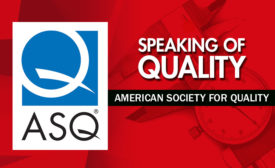Home » Keywords: » document control
Items Tagged with 'document control'
ARTICLES
The ins and outs of document control
Learn the difference between document control, management, systems and software.
May 6, 2021
The Evolution of Calibration Documentation
Calibration software is the most advanced solution available to support and guide calibration management activities.
December 2, 2020
Is Quality and Validation ready for Industry 4.0?
Validation practices need to evolve in order for regulated industries to keep up a competitive edge.
November 1, 2020
Certificates v. Certifications in the Quality Industry
The confusion between certificates and certification still exists.
January 15, 2018
3 Benefits of Centralizing Your Operations with a Document Control System
A document control system opens up the opportunity for improvement in other areas of your business.
January 3, 2017
Document Change Control Management
Control the lifecycle of all changes within a QMS system.
December 1, 2016
7 Ways Technology Can Streamline Your Document Control Process
Automated document control provides a method for document management that is flexible, organized, efficient and consistent.
April 1, 2016
Documents Controlled
It’s audit time. Do you know where your documents are?
February 3, 2014
Get our new eMagazine delivered to your inbox every month.
Stay in the know with Quality’s comprehensive coverage of the manufacturing and metrology industries.
SIGN UP TODAY!Copyright ©2024. All Rights Reserved BNP Media.
Design, CMS, Hosting & Web Development :: ePublishing









